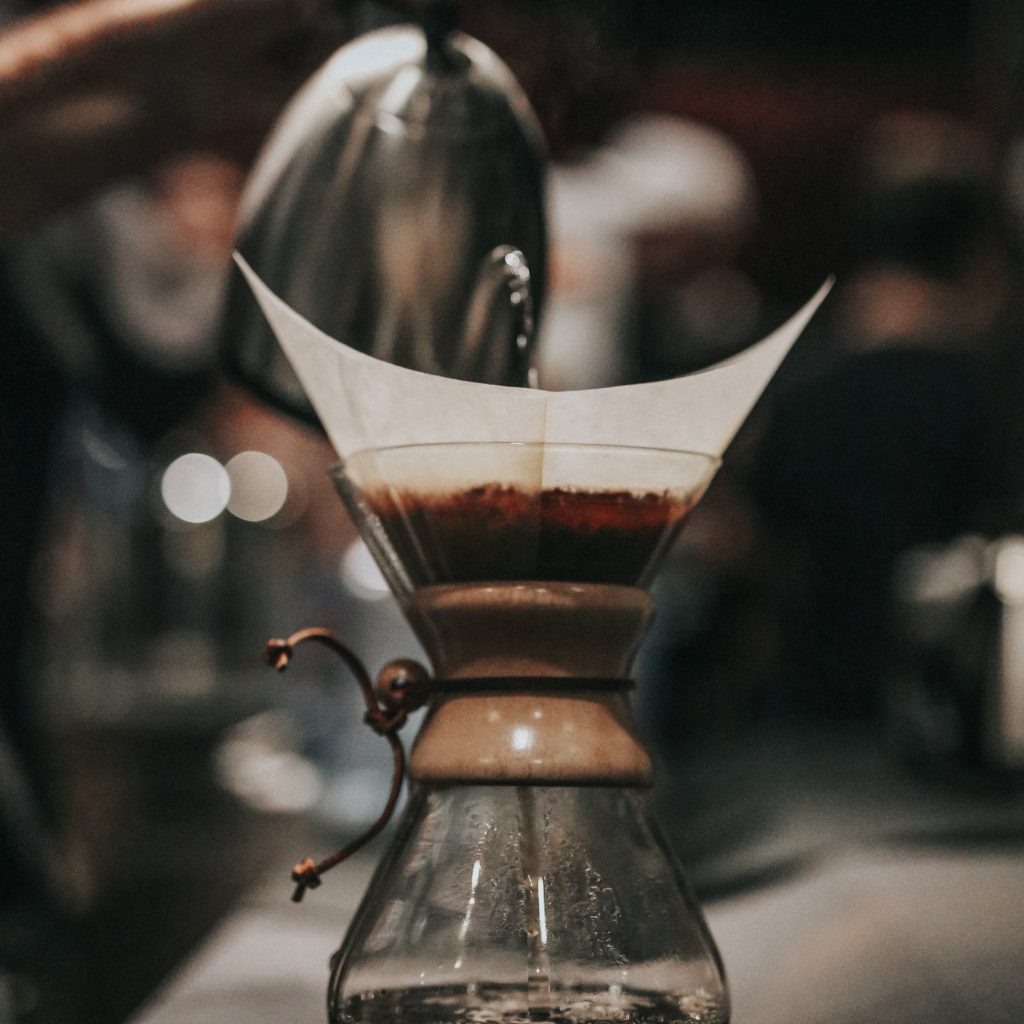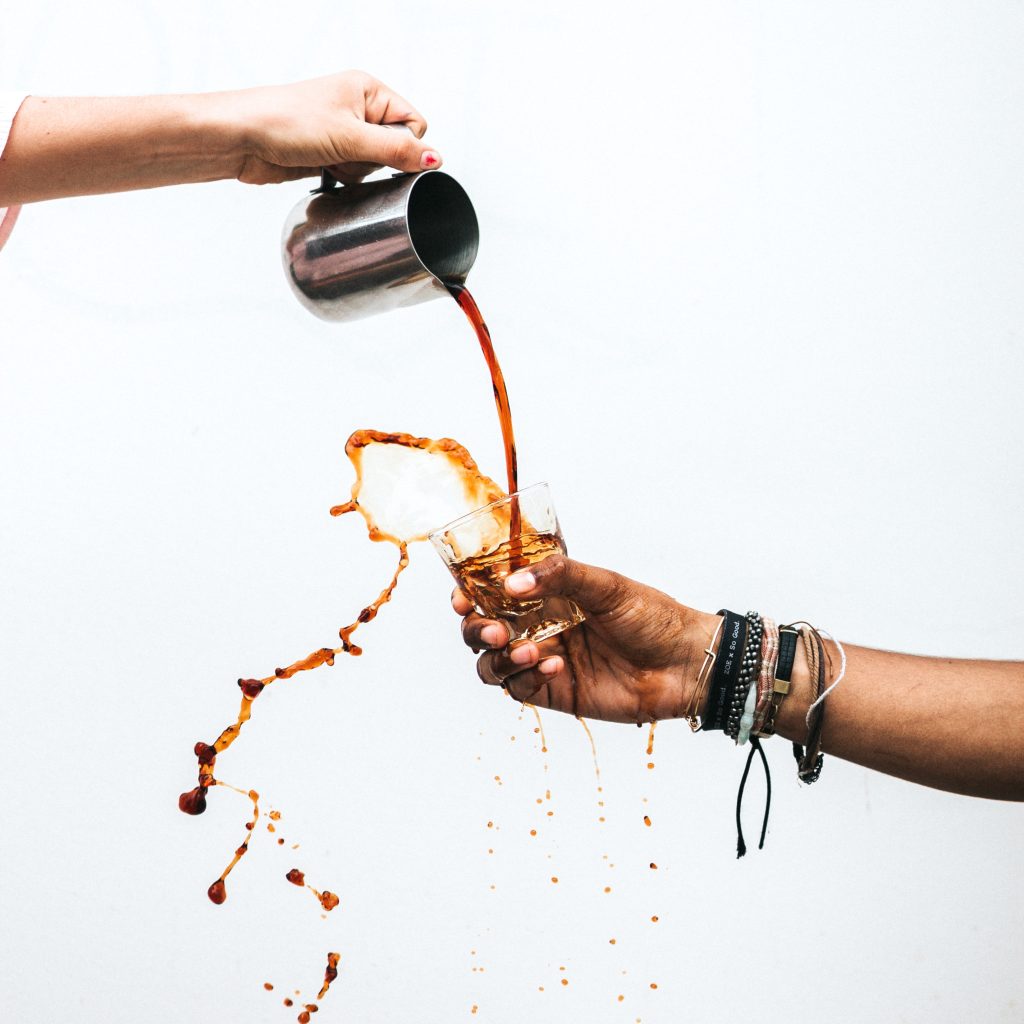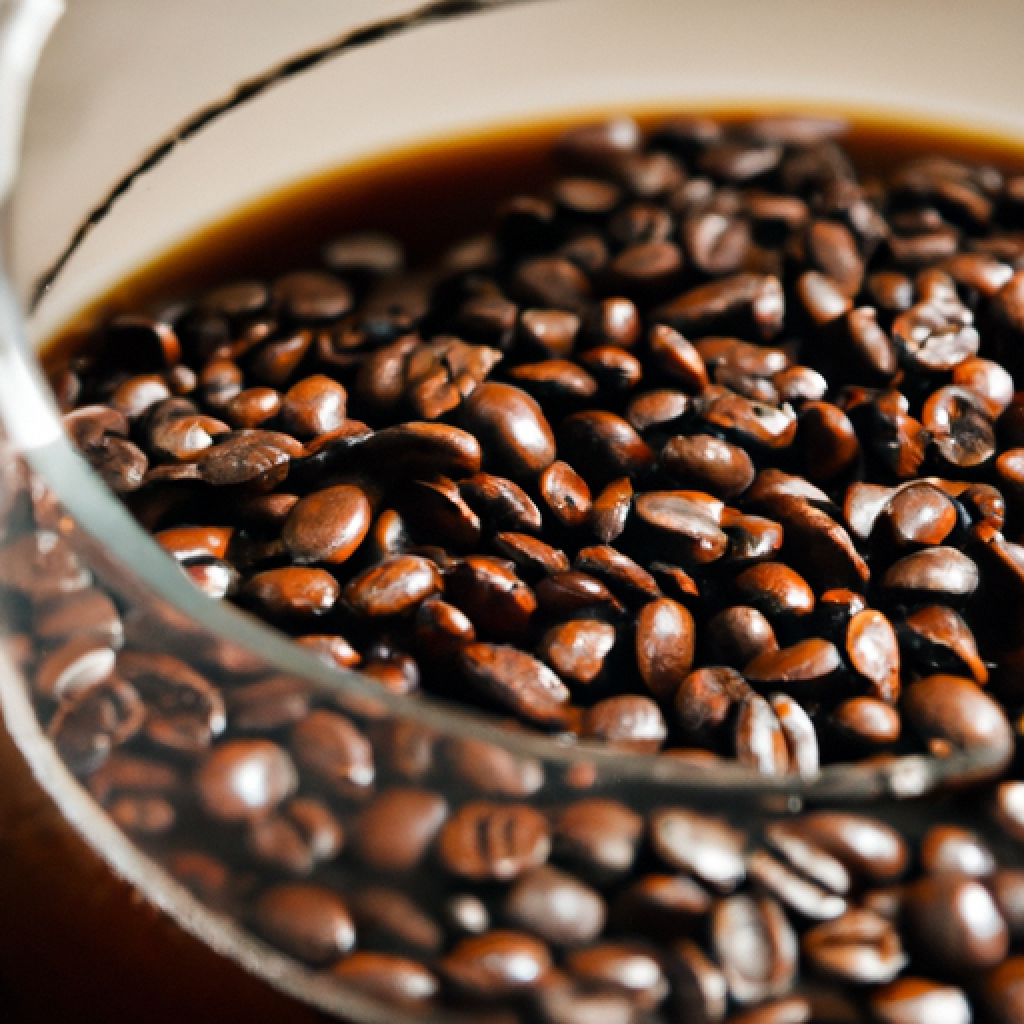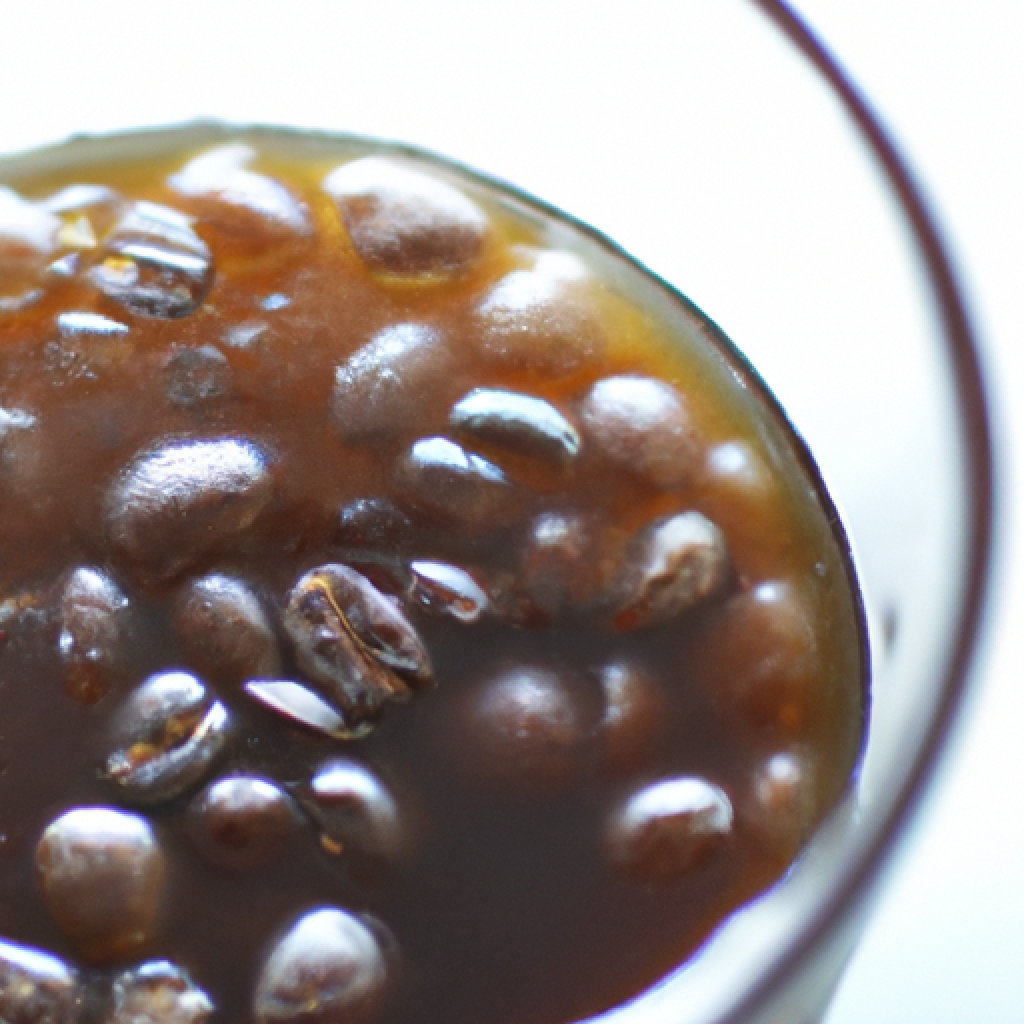The Ultimate Guide Best Coffee Beans for Cold Brew
In our comprehensive guide to best coffee beans for cold brew, we explore the world of coffee beans dedicated to the art of cold brew. With its smooth, rich flavor and lower acidity, cold brew has gained popularity amongst coffee enthusiasts. However, choosing the right coffee beans is essential to achieving the perfect cold brew experience. From discussing the different types of coffee beans to highlighting the key factors to consider, our guide provides invaluable insights on selecting the best coffee beans for cold brew, ensuring that each cup delivers a sublime and refreshing taste.

The best coffee beans for cold brew – types
Arabica Coffee Beans
Arabica coffee beans are widely regarded as the superior option when it comes to coffee. They are known for their delicate flavor and pleasant aroma. Arabica beans have a lower caffeine content compared to other varieties, making them a popular choice for those who are sensitive to caffeine. These beans are grown at higher altitudes, typically above 2,000 feet, which contributes to their unique characteristics. They have a sweet, smooth taste, often with notes of fruit or berries. Arabica beans are generally more expensive than other types due to their higher quality and limited availability.
Robusta Coffee Beans
Robusta coffee beans are known for their strong flavor and higher caffeine content. They are grown at lower altitudes, typically below 2,000 feet, and are more resistant to diseases and pests compared to Arabica beans. Robusta beans have a more bitter taste, often with earthy or nutty undertones. They are commonly used in espresso blends or instant coffees where a strong flavor and higher caffeine kick are desired. Robusta beans are also more cost-effective, which makes them a popular choice for commercial coffee production.
Blend of Arabica and Robusta Coffee Beans
A blend of Arabica and Robusta coffee beans combines the best of both worlds. This type of coffee offers a balanced flavor profile, with the richness and complexity of Arabica beans complemented by the robustness and caffeine punch of Robusta beans. The ratio of Arabica to Robusta can vary, providing different levels of intensity and flavor. Blends are often created to meet specific taste preferences or to achieve a desired balance between flavor and caffeine content. The versatility of blends makes them a popular choice among coffee enthusiasts who enjoy experimenting with different flavor profiles.
Roast Level
Light Roast
Light roast coffee beans are lightly roasted to preserve the natural characteristics of the beans. They are typically roasted for a shorter duration, resulting in a light brown color and a subtle, tangy flavor profile. Light roast coffee is known for its bright acidity, floral notes, and delicate flavors. The beans have a higher caffeine content compared to darker roasts, making them a popular choice for those who prefer a more vibrant and caffeine-packed brew. Light roast coffee is often preferred for tasting the nuanced flavors of single-origin beans.
Medium Roast
Medium roast coffee beans are roasted for a slightly longer duration than light roast beans. This roast level strikes a balance between the acidity and the deeper flavors of the coffee beans. Medium roast beans have a richer flavor profile compared to light roast, often with notes of chocolate or caramel. The acidity is still present but less pronounced, resulting in a smoother and more well-rounded cup of coffee. This roast level is extremely popular as it showcases the flavors of the coffee while maintaining a good level of caffeine.
Dark Roast
Dark roast coffee beans are roasted for a longer duration, resulting in a dark brown color and a more robust flavor profile. The longer roasting process gives the beans a smoky and bittersweet taste, often with notes of cocoa or toasted nuts. Dark roast coffee has a lower acidity compared to lighter roasts, which gives it a fuller-bodied and less tangy flavor. The beans have a lower caffeine content compared to lighter roasts due to the prolonged roasting, making dark roast coffee a go-to option for those who prefer a bold and rich coffee experience.
Single-Origin vs. Blend
Single-Origin Coffee Beans
Single-origin coffee beans come from a specific geographic region or a single farm. These beans are prized for their unique flavor profiles that are influenced by the soil, climate, and cultivation techniques of a particular region. Single-origin beans allow coffee enthusiasts to experience the distinct taste characteristics that are specific to a particular origin. They often showcase the nuances of flavor, with notes ranging from fruity and floral to earthy and spicy. Single-origin coffees are perfect for those who enjoy exploring the diverse tastes that coffee can offer.
Blend Coffee Beans
Blend coffee beans are a combination of beans sourced from different origins or varieties. Blends are carefully crafted to create a consistent flavor profile that satisfies a wide range of taste preferences. By blending different beans, roasters can achieve a balanced and complex flavor that is pleasing to a broader audience. Blends often aim to combine the desirable qualities of different beans to create a harmonious taste experience. Whether it’s a blend of Arabica and Robusta for a well-rounded brew or a blend of single-origin beans to create a unique flavor combination, blends offer versatility and consistency.
Grind Size
Coarse Grind
Coarse grind coffee is typically used for brewing methods that require a longer steeping time, such as French press or cold brew. The larger grind size allows for a slower extraction process, resulting in a brew that is less bitter and has a smoother mouthfeel. Coarse grind coffee is characterized by its chunky texture, similar to coarse sea salt. This grind size is ideal for cold brew enthusiasts as it extracts the flavors more slowly, resulting in a less acidic and milder cup of coffee.
Medium-Coarse Grind
Medium-coarse grind is slightly finer than coarse grind and is commonly used for brewing methods like pour-over or Chemex. This grind size strikes a balance between extraction time and flavor clarity. It allows for a quicker extraction compared to coarse grind, resulting in a brew that has a vibrant flavor profile with balanced acidity. Medium-coarse grind coffee has a texture similar to rough sand, making it suitable for methods that require a moderate extraction rate.
Medium Grind
Medium grind coffee is one of the most commonly used grind sizes and is suitable for a variety of brewing methods, including drip coffee machines and Aeropress. The medium grind size offers a good balance between extraction time and flavor complexity. It provides a brew with a well-rounded flavor profile, moderate acidity, and a pleasant mouthfeel. Medium grind coffee is similar in texture to granulated sugar, making it versatile enough for different brewing devices.

Flavor Profile
Fruity and Bright
Fruity and bright flavors are often associated with light to medium roast coffee beans, particularly those with a higher acidity level. These flavors can range from citrusy notes like lemon or orange to the sweetness of berries or stone fruits. Coffee beans with a fruity and bright flavor profile are commonly sourced from African or Central American regions. The vibrant and tangy taste of these coffees makes them refreshing and enjoyable, especially for those who prefer a zesty and lively cup of coffee.
Chocolatey and Nutty
Chocolatey and nutty flavors are commonly found in medium to dark roast coffee beans. These flavors bring a comforting and indulgent element to the coffee experience. Coffee beans with chocolatey and nutty profiles often exhibit notes of dark chocolate, caramel, or toasted nuts. They are typically sourced from South American or Indonesian regions. The rich and smooth taste of these coffees makes them a favorite among coffee lovers seeking a more decadent and soul-warming beverage.
Earthy and Spicy
Earthy and spicy flavors are often present in dark roast coffee beans, particularly those sourced from Indonesian or African regions. The unique terroir and processing methods used in these regions contribute to the earthy and spicy characteristics found in the coffee. Earthy flavors can resemble woody or herbal notes, while spicy flavors can range from black pepper to cloves or cinnamon. Coffee with an earthy and spicy flavor profile provides a bold and robust taste experience, perfect for those who enjoy a strong and adventurous cup of coffee.
Acidity Level
Low Acidity
Coffee beans with low acidity are often associated with dark roast or beans that have undergone a longer roasting process. Low acidity coffee offers a smooth and mellow flavor profile, with a more muted tanginess. This acidity level is preferred by those who enjoy a less sharp and more balanced taste in their coffee. The reduced acidity also makes it a suitable option for individuals with sensitive stomachs, as it tends to be gentler on the digestive system.
Medium Acidity
Medium acidity coffee strikes a balance between the brightness of high acidity coffee and the smoothness of low acidity coffee. It provides a pleasant tanginess without being overpowering. Coffees with medium acidity are versatile and can be enjoyed by a wide range of coffee drinkers. The moderate acidity level allows the coffee’s other flavor notes to shine, resulting in a well-rounded and enjoyable cup of coffee. It is a popular choice for those who appreciate a balanced and flavorful brew.
High Acidity
High acidity coffee is often found in lighter roast beans or those with unique flavor profiles from specific origins. It offers a vibrant and lively taste experience, with a pronounced tanginess. High acidity coffee is praised for its complexity and ability to showcase the intricate flavors of the beans. It can exhibit fruity, citrusy, or floral notes, making it a favorite among those who enjoy a bright and nuanced cup of coffee. The acidity can be too intense for some palates, but for others, it adds a refreshing and invigorating element to their coffee.

Certifications
Organic
Organic coffee beans are grown without the use of synthetic pesticides, herbicides, or fertilizers. These beans are cultivated using sustainable farming practices that focus on the overall health of the ecosystem. Organic certification ensures that the coffee beans are produced in accordance with strict standards set by certifying bodies. The absence of chemical residues in organic coffee makes it a healthier and more environmentally friendly choice. For those concerned about the impact of conventional agriculture on their health and the planet, organic coffee offers a reassuring option.
Fair Trade
Fair trade coffee is sourced from farmers who are paid fair prices for their beans, ensuring they receive a living wage. Fair trade certification guarantees that the farmers and workers are not exploited and that the coffee is produced under ethical working conditions. By supporting fair trade coffee, consumers can contribute to the economic empowerment and socio-economic development of coffee-growing communities. Fair trade certification is an important consideration for those who value social justice and want to make a positive impact through their coffee purchases.
Rainforest Alliance
Rainforest Alliance certification verifies that coffee beans are produced using sustainable practices that promote biodiversity, environmental conservation, and the well-being of farming communities. Coffee bearing the Rainforest Alliance seal comes from farms that prioritize ecosystem protection, water conservation, and worker welfare. By choosing Rainforest Alliance certified coffee, consumers can support efforts to preserve the natural ecosystems in coffee-growing regions and enhance the livelihoods of farmers. This certification is ideal for those who seek coffee that is not only delicious but also contributes to a more sustainable future.
Freshness
Whole Bean
Whole bean coffee refers to coffee that is sold in its whole, unground form. It is widely recognized that beans retain their freshness and flavors for longer when they are kept in their whole state. Whole bean coffee allows you to grind the coffee just before brewing, ensuring maximum freshness and flavor extraction. By purchasing whole bean coffee, you have greater control over the grind size, allowing you to tailor it to your preferred brewing method. This option is perfect for those who appreciate the ritual of grinding their beans and savoring the freshest cup of coffee possible.
Pre-Ground
Pre-ground coffee refers to coffee that is already processed into a ground form, ready for brewing. While pre-ground coffee offers convenience and saves time, it loses some of its freshness and flavor compared to whole bean coffee. Once coffee is ground, it is exposed to oxygen and begins to lose its aromatic compounds more rapidly. However, some people prefer the convenience of pre-ground coffee, especially when traveling or in situations where grinding fresh beans is not feasible. Choosing pre-ground coffee can still result in a flavorful cup, especially when purchased from reputable roasters and consumed within a reasonable time frame.

Sourcing and Roasting
Direct Trade
Direct trade coffee refers to the practice of coffee roasters sourcing beans directly from coffee farmers or cooperatives, bypassing intermediaries. This direct relationship allows for better transparency, fairer prices, and higher quality control. Direct trade not only ensures that farmers receive a higher income but also promotes sustainable farming practices and community development. By supporting direct trade coffee, consumers can enjoy a coffee that is more ethically sourced and traceable back to its origin. This sourcing method is highly valued by those who prioritize social responsibility and want to make a positive impact on the coffee industry.
Small-Batch Roasting
Small-batch roasting involves the careful and artisanal roasting of coffee beans in smaller quantities. By roasting in small batches, roasters have better control over the process, allowing them to bring out the unique flavors and characteristics of the beans. Small-batch roasting ensures consistency and freshness, as the beans are roasted in smaller quantities and can be quickly delivered to customers. This method is favored by specialty coffee roasters who place a strong emphasis on quality and taste. Small-batch roasting enables coffee enthusiasts to enjoy a meticulously crafted cup of coffee, showcasing the best that the beans have to offer.
Fresh Roasting Date
A fresh roasting date refers to the date when the coffee beans were roasted. Coffee is at its peak freshness and flavor profile within a specific time frame after roasting. Ideally, coffee should be consumed within two to four weeks after the roasting date to fully enjoy its flavors. Many specialty coffee roasters include the roasting date on the packaging to ensure consumers have access to the freshest coffee possible. By selecting coffee with a recent roasting date, consumers can be confident about the coffee’s quality and enjoy a fuller and more vibrant taste experience.
Conclusion to best coffee beans for cold brew
Choosing the best coffee beans for cold brew requires consideration of various factors, including the type of beans, roast level, grind size, flavor profile, acidity level, certifications, freshness, and sourcing methods. Each element contributes to the overall taste and quality of the cold brew coffee. Whether you prefer the delicate and fruity notes of Arabica beans or the bold and robust flavors of Robusta, understanding the options available and experimenting with different combinations can lead to a personalized and satisfying cold brew experience. By exploring the vast world of coffee beans, you can elevate your cold brew to new heights and enjoy the perfect cup of coffee every time.



